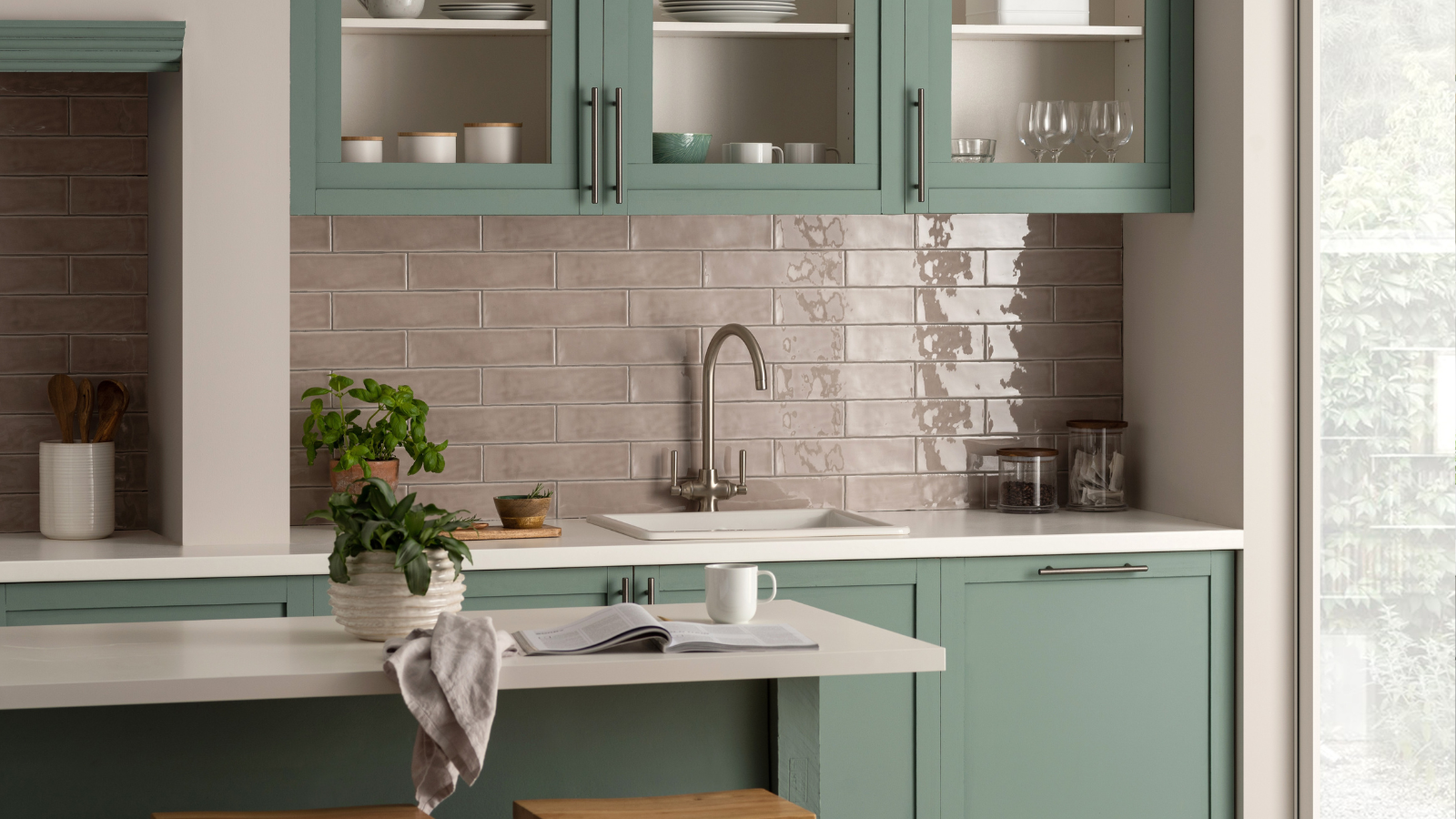How to plan a kitchen extension with skylights
Plan, design and build a stylish kitchen extension with skylights using these ideas — plus our guide provides plenty of helpful advice and inspiration
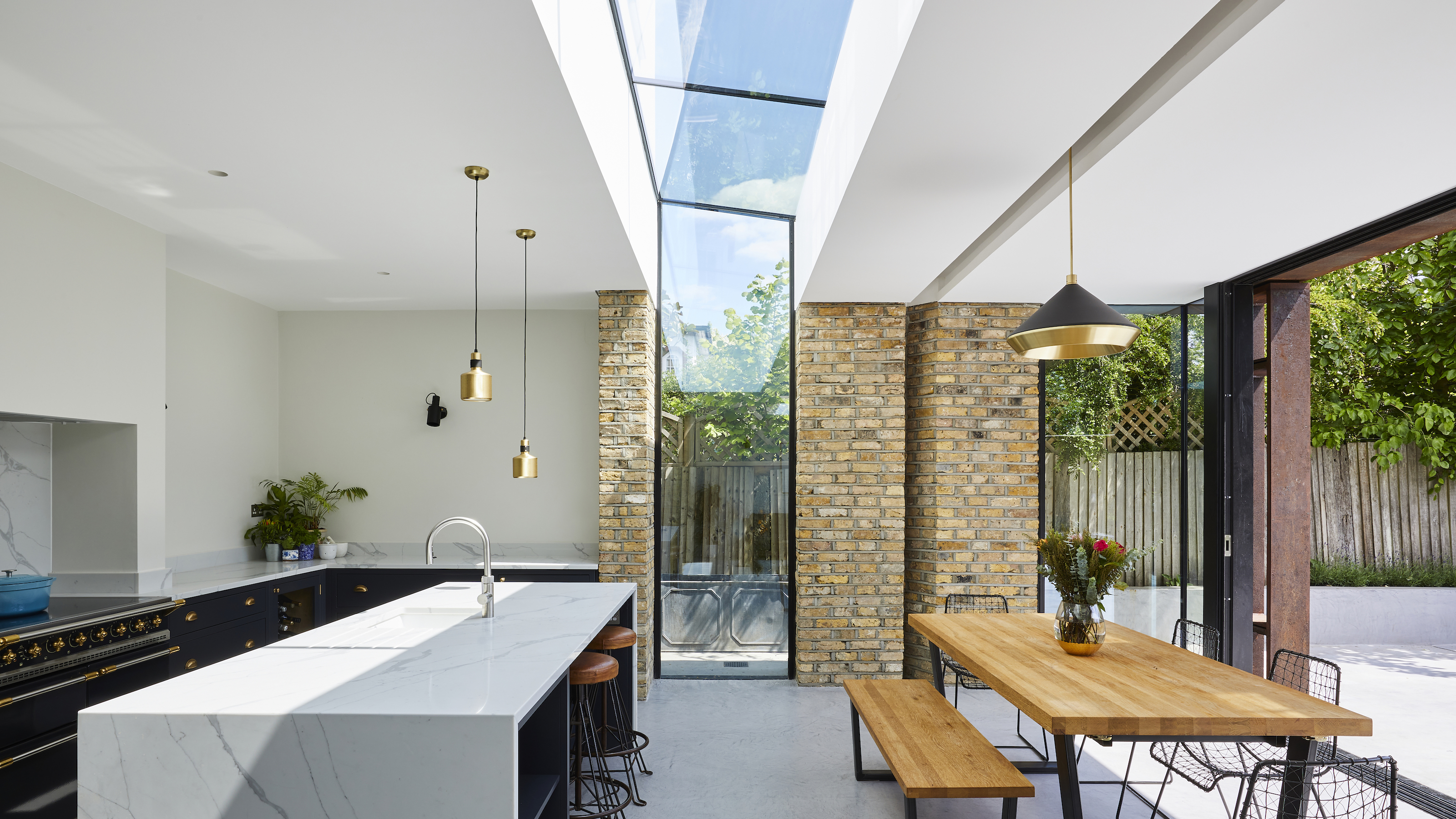
Adding a kitchen extension with skylights will help you create a sun-filled social space to enjoy whatever the weather.
Skylights and roof windows offer many benefits that go beyond being an architectural feature in your new space. Increasing natural light in kitchen extensions reduces our dependence on artificial lighting during the day and can help improve our wellbeing.
Rooflights can also be used to bring natural light deeper into your home, which can be important when adding a new extension.
Take a look at different ways glazing in the roof can be installed into a new kitchen extension with inspiration from real-life projects.
Can I put skylights in my kitchen extension?
You can only put skylights in a kitchen extension if it is single storey, or you intend to add a two-storey extension with a double-height void above the kitchen or living space. Skylights can be added to pitched, lean-to and flat roof extensions, but try to ensure you won't be overlooked by neighbours.
The terms skylight and rooflight or roof windows can be used interchangeably, which can be confusing when searching online for products and advice.
1. Bring in extra light to a dark kitchen extension
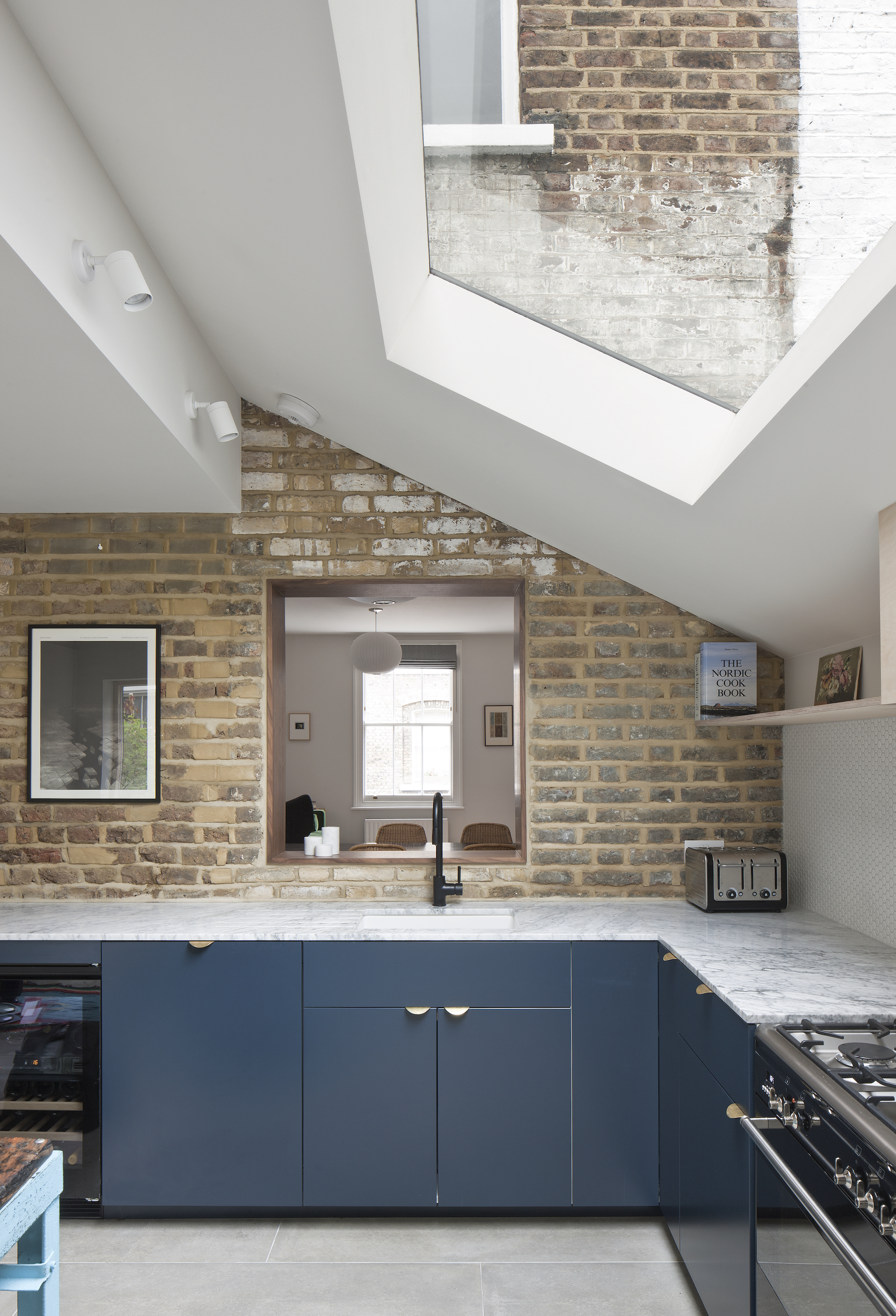
Incorporating a roof window into a kitchen extension design will immediately add architectural depth to even the simplest form.
Bring your dream home to life with expert advice, how to guides and design inspiration. Sign up for our newsletter and get two free tickets to a Homebuilding & Renovating Show near you.
Bringing in light from above is a beautiful way to create new passages of light throughout a kitchen and illuminate workspaces with natural light. The illusion of a rooflight also helps to make small kitchen extension ideas feel taller and wider.
In this side return extension, a wide skylight was added above the cooking zone for this exact reason, while the old exterior window has also been retained for the darker internal spaces to benefit from this feature, also.
2. Combine skylights with other types of glazing in a rear extension
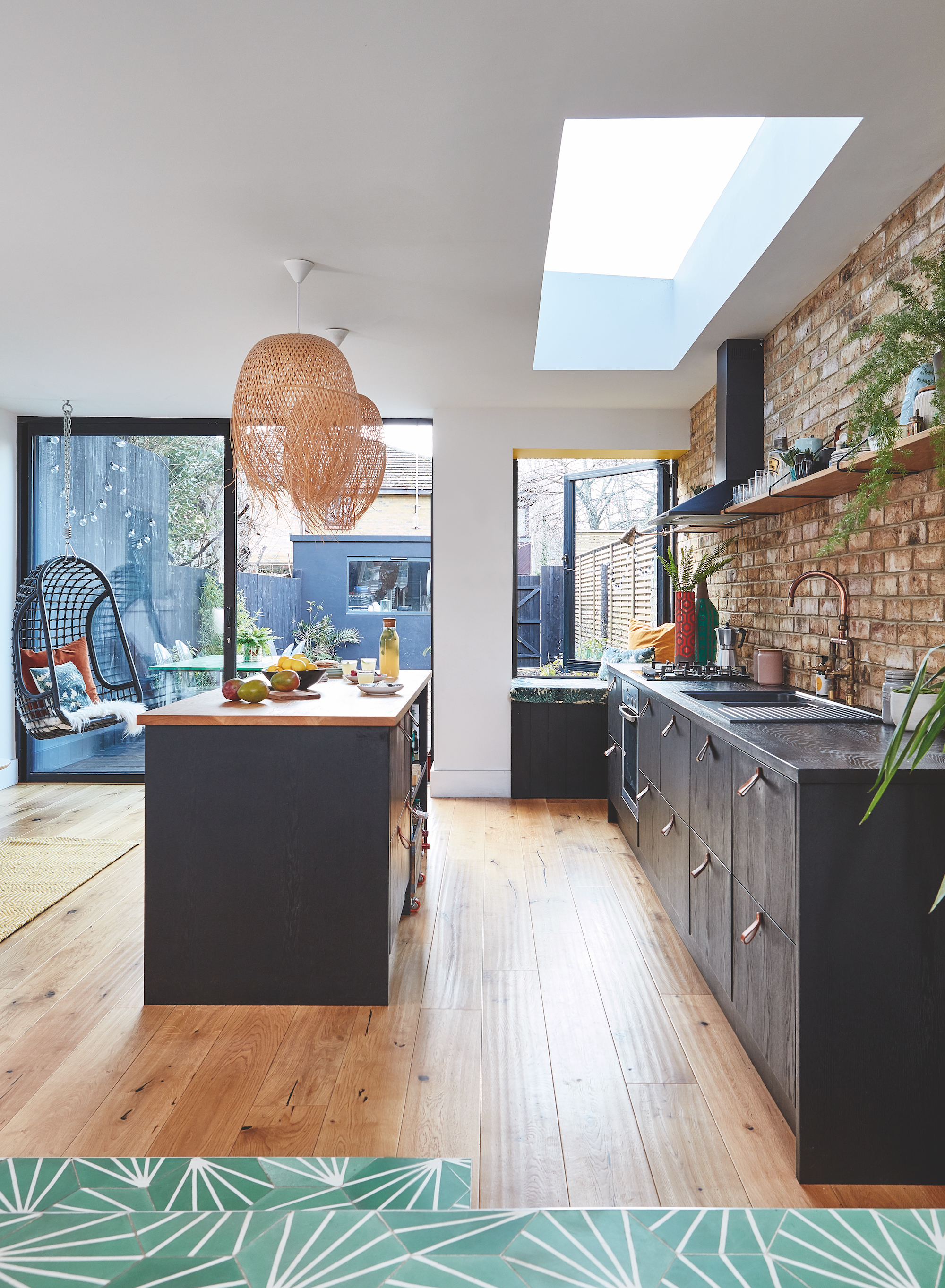
Bringing in light from multiple different angles using ceiling glazing or rooflights is a great idea if your extension doesn't benefit from lots of direct sunlight.
Taking its cue from kitchen conservatory extensions, this modern rear extension uses multiple glazing designs to let light infiltrate the space. First, the long rooflight brightens the cooking and island area, while the picture window and sliding doors provide a view of the garden.
3. Embrace different kinds of light
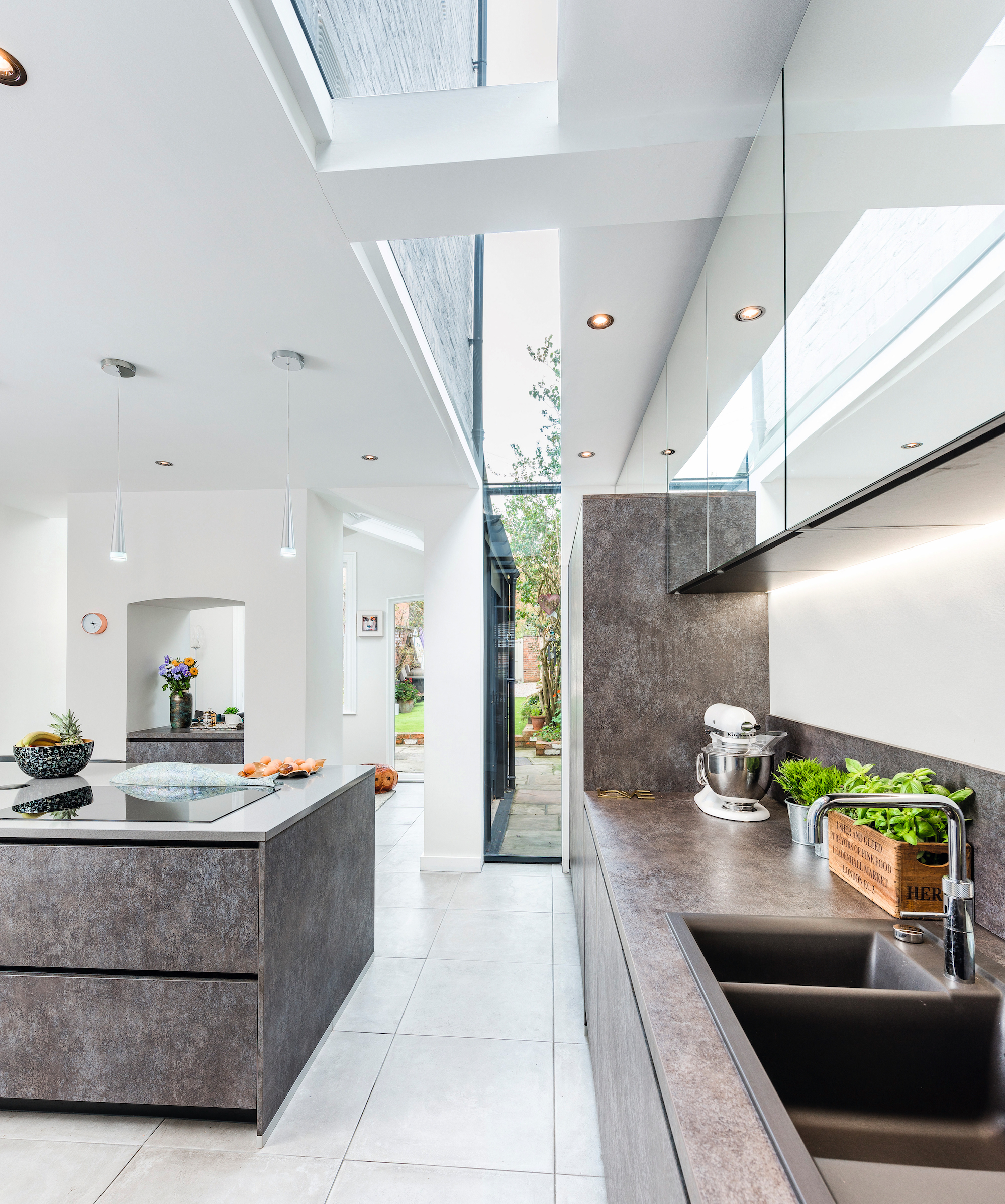
To design a kitchen extension that suits your individual lifestyle, one factor to consider is when you will use the room most.
Early risers and those that have breakfast together will benefit from an easterly-facing extension, while if your space will double as a kitchen diner extension in the evening, west-facing light might suit better.
Thanks to their overhead nature, skylights benefit from multiple types of light throughout the day. While the position of the extension will dictate which will infiltrate your kitchen space, the illumination should last for a longer amount of time.
Not only will this increase your sense of wellbeing in the kitchen space, but also will reduce reliance during the day on artificial lighting, saving on energy bills.
Plus, if your kitchen moonlights as a home office for some of the week, this ambient lighting throughout the day will help increase productivity.
4. Include standard-sized skylights to keep to a kitchen extension to a budget
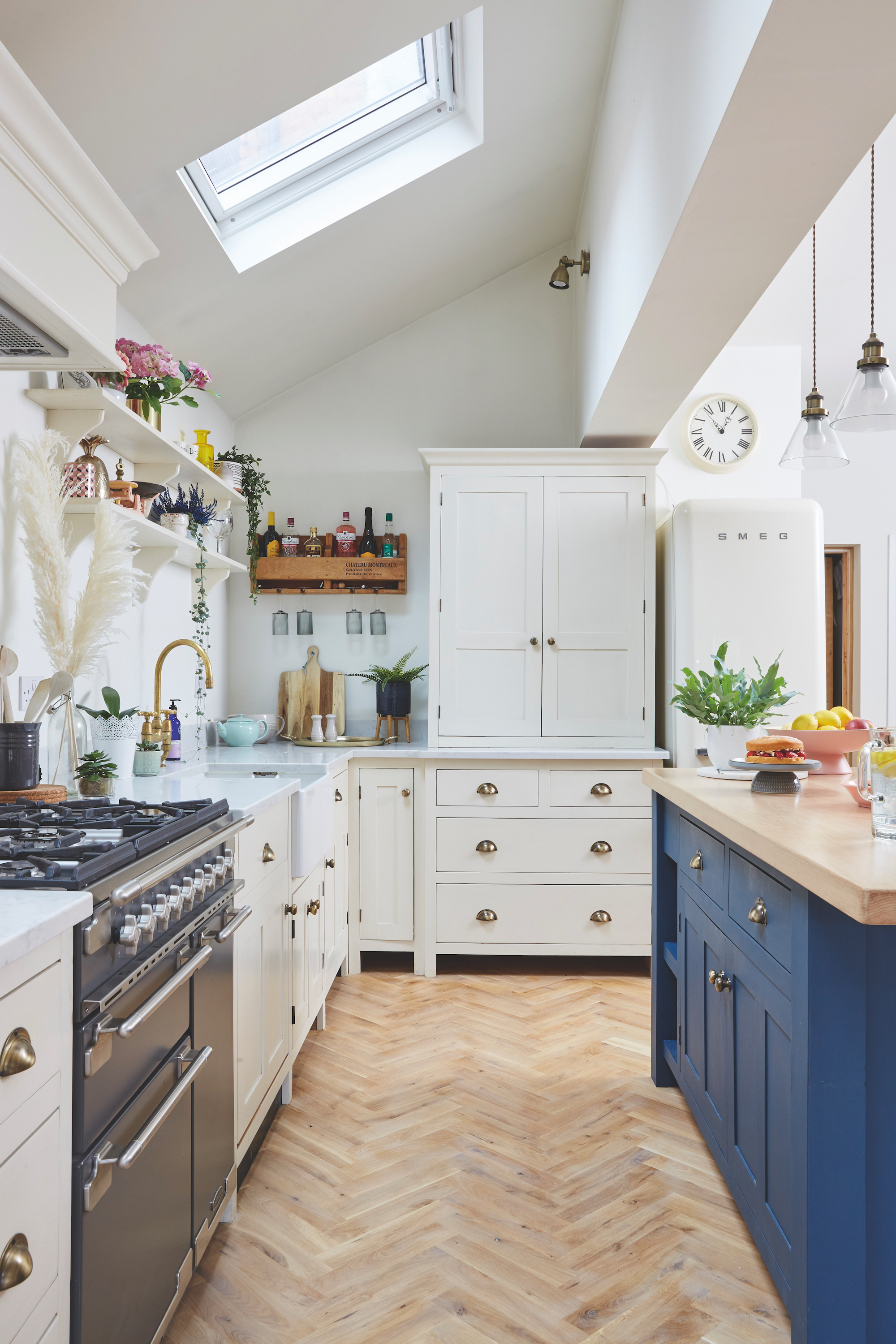
For smaller spaces or those being built to a tight budget, there is lots of potential in standard-sized or off-the-shelf skylights.
Bespoke sizes increase kitchen extension costs, as do slimmer sightlines and electric or solar powered openings, so if you're keeping an eye on finances these are good elements to really examine if you need them.
Plus, cheaper or smaller skylights might mean you can install more of them around the kitchen to illuminate different areas.
5. Look at breaking up rooflights in a kitchen extension
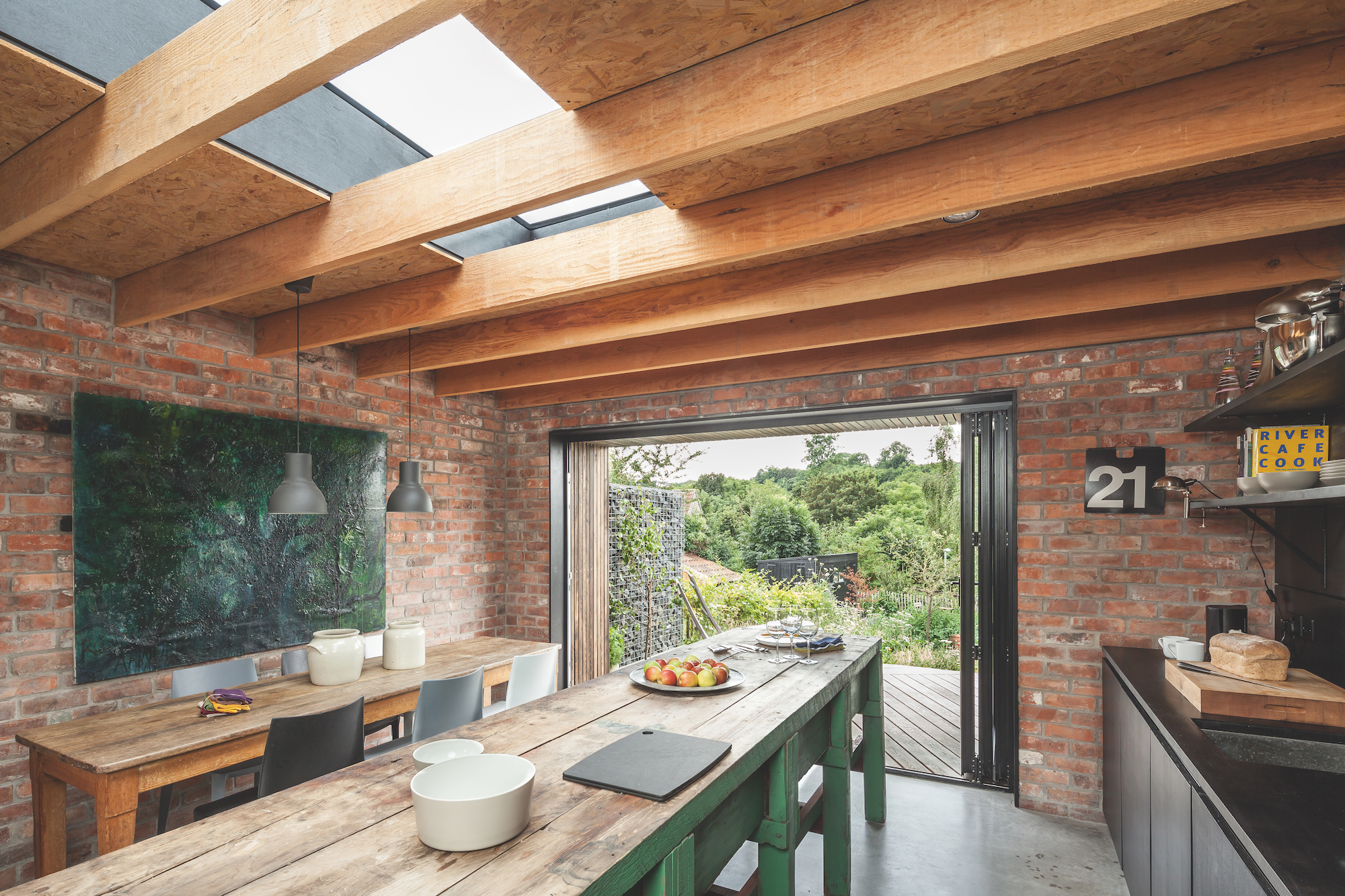
One downside of a kitchen extension that includes skylights is overheating in summer. Copious amounts of overhead glazing can create a space so warm the thought of cooking feels out of the question.
One way to circumvent this is to install opening rooflights – which may be electric roof windows – as opposed to fixed, which will encourage ventilation throughout the kitchen. Another alternative is to shield the space from direct light when the sun is directly overhead.
Working in a similar way to a brise soleil, this rustic kitchen's roof trusses have been extended below the recessed skylight.
6. Install a large roof lantern
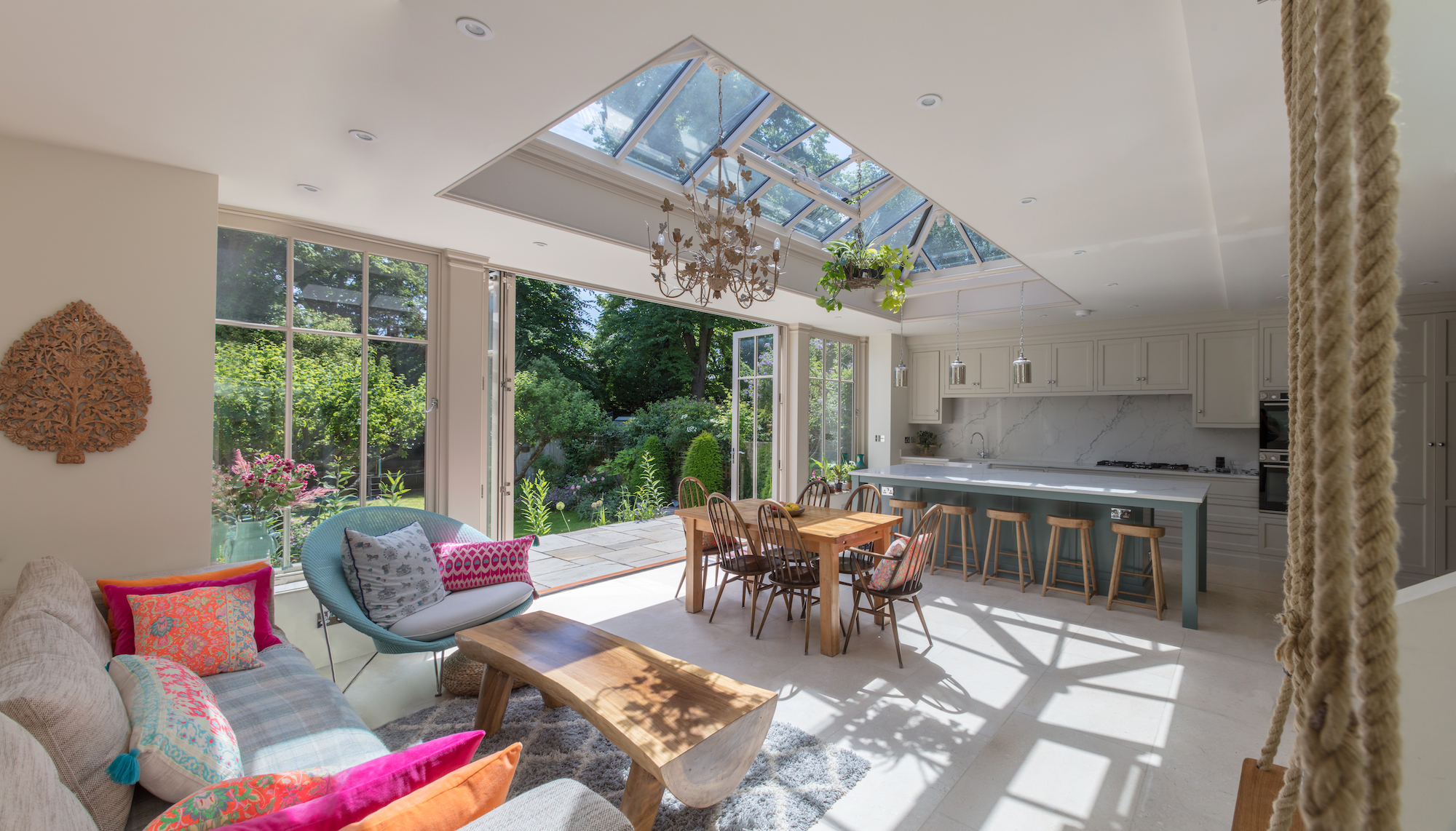
For maximum impact and to create extra height in your kitchen extension, think about installing a roof lantern rather than a skylight.
This design will only work if your extension will have a flat roof, but their elegance and architectural impact should put them in consideration alongside skylights.
In the example above, the large lantern rains light down onto not just the kitchen but the dining and sitting areas as well.
Do skylights require planning permission?
If you're applying for planning permission to build your kitchen extension, the design of the skylights will be considered and approved within this application, so you don't need to apply for permission separately.
For those building an extension under permitted development rights, this is also acceptable but be wary of adding too much glazing to the design overall. The new extension must be in keeping with the original house and anything too different from this style might fail to qualify under permitted development. (Bear in mind too that permitted development rights do not apply to all homes.)
However, if your kitchen extension has already been built and you're introducing new skylights, note that skylights must not protrude no more than 150mm than the existing roof line to fall within PD rights.
Amy is an interiors and renovation journalist. She is the former Assistant Editor of Homebuilding & Renovating, where she worked between 2018 and 2023. She has also been an editor for Independent Advisor, where she looked after homes content, including topics such as solar panels.
She has an interest in sustainable building methods and always has her eye on the latest design ideas. Amy has also interviewed countless self builders, renovators and extenders about their experiences.
She has renovated a mid-century home, together with her partner, on a DIY basis, undertaking tasks from fitting a kitchen to laying flooring. She is currently embarking on an energy-efficient overhaul of a 1800s cottage in Somerset.

